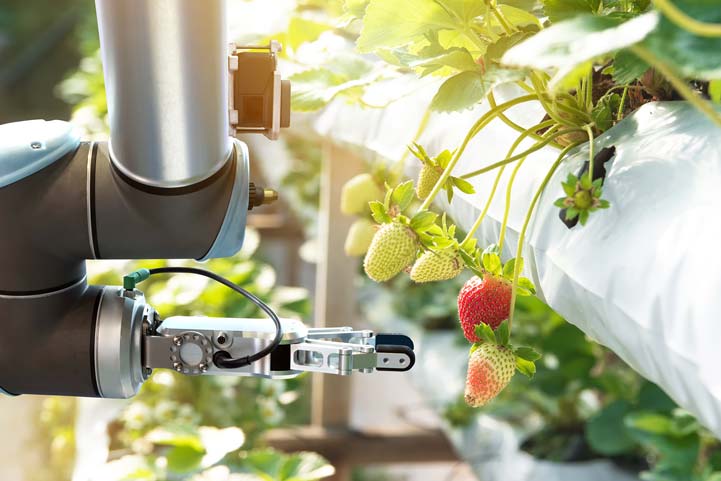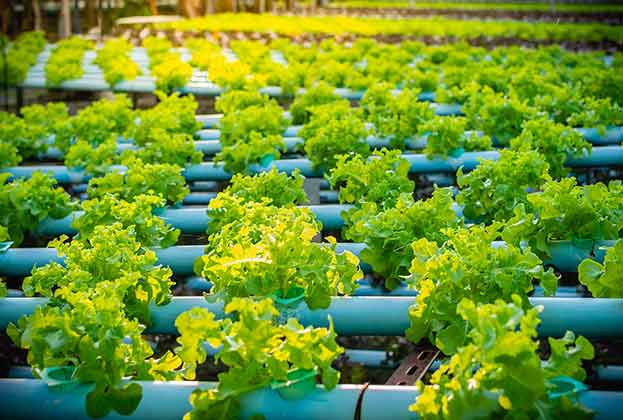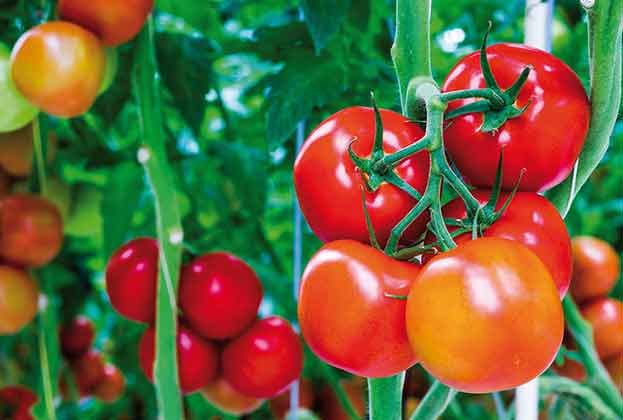Early adopters of vertical farming technology have the chance to establish a unique business by following a robust and well considered business plan
Home-growing systems
Vertical farming is very flexible thanks to advances in modular set-ups, from kitchen based systems to window boxes and hydroponic loop garden greenhouses. Such modules are designed to be easily incorporated into a home, shop, restaurant or even the workplace. Installation now, when the market is still young, will have an undeniable novelty.
Vegetables picked fresh by customers from a futuristic indoor farm would make an ideal Instagram post for the experience-focused millennial crowd. The key to a good business here is ease of use for multi-taskers and the reliability of the crop, so subscription services for maintenance and new plants are key, as well as the smart use of sensors to help the system look after itself. Completely fresh produce that looks beautiful with guaranteed provenance will always be a winner.
Niche crops
Wasabi. Micro-herbs. Medicinal-grade cannabis under licence. These high value crops can now be grown in the temperate UK climate using CEA. Capital expenditure in infrastructure and growing systems will be higher due to the demands of the crop and the commercial scale of the market, so the key is finding the right location. Co-locating with sites generating surplus carbon dioxide and heat minimises costs, so this is of particular interest to anaerobic digester (AD) operators. Generally, converting older buildings is less satisfactory than building bespoke CEA greenhouses due to the need for biosecurity and well-designed automation and processing facilities. Institutional investment is available for certain crop markets.
Other niche crops that have been proven to flourish with hydroponic systems include a whole range of mint leaves, sorrel and baby leaf salads. These enterprises depend on proximity to market to preserve freshness, and so can be labour intensive in servicing customers. However, there can be demand from local caterers looking for unique flavours that have provenance and are grown by novel, sustainable methods.
Build a brand
While the economics of fresh produce are still tipped in favour of outdoor and imported production, the other way to gain market position is to build a brand. There are existing operators in the market who are able both to sell the infrastructure and franchise the marketing opportunity to UK investors. This approach enables rapid access to mainstream supply chains in supermarkets and retailers. Building a brand from scratch takes time, consideration and energy, but promoting the benefits of CEA is likely to achieve a loyal following if done correctly.
Key environmental messages around the system will resonate with consumers, such as no pesticides, reduced food miles and efficient water usage. According to a 2017 Cone Communications study, 87% of consumers would buy a product with a social and environmental benefit if given the opportunity and 88% would be more loyal to the company. Two-thirds of millennials are already buying products with these things in mind. However, increasingly consumers are rejecting notions of 'factory farming', so it is vital that your brand of CEA growing system communicates on a human scale even if the technology is advanced.

DIFFERENT GROWING SYSTEMS
Vertical farming:
A form of controlled environment agriculture distinct due to its use of vertically stacked layers, each capable of producing crops.
Hydroponics:
Plants are grown in the absence of soil by using a nutrient solution. Roots may be suspended within the solution or supported by pebbles, sand or other materials. Various forms exist including ebb-and-flow, deep water and continuous flow.
.jpg)
Aeroponics:
Plants are still grown in the absence of soil by using a nutrient solution. The nutrient solution is delivered as a fine mist to the roots that hang in suspension.

Aquaponics:
A form of hydroponics where nutrients are provided through the waste products of aquatic creatures. Plant growth purifies the water in turn.

Read the articles within Spotlight: Controlled Environment Agriculture below.
.jpg)


